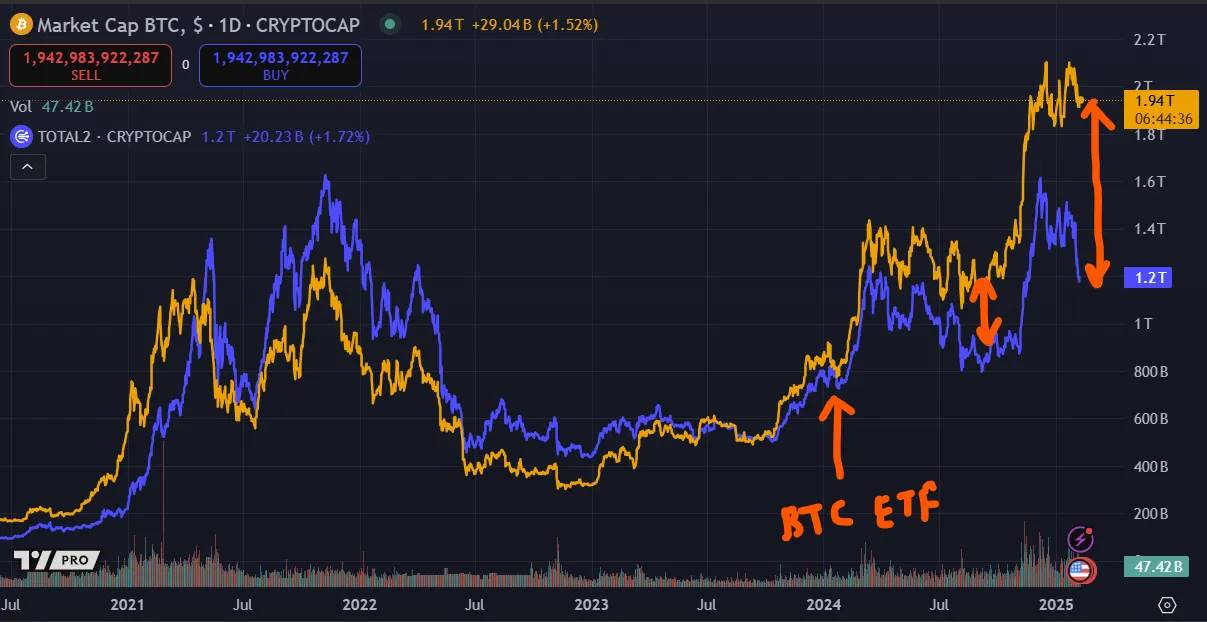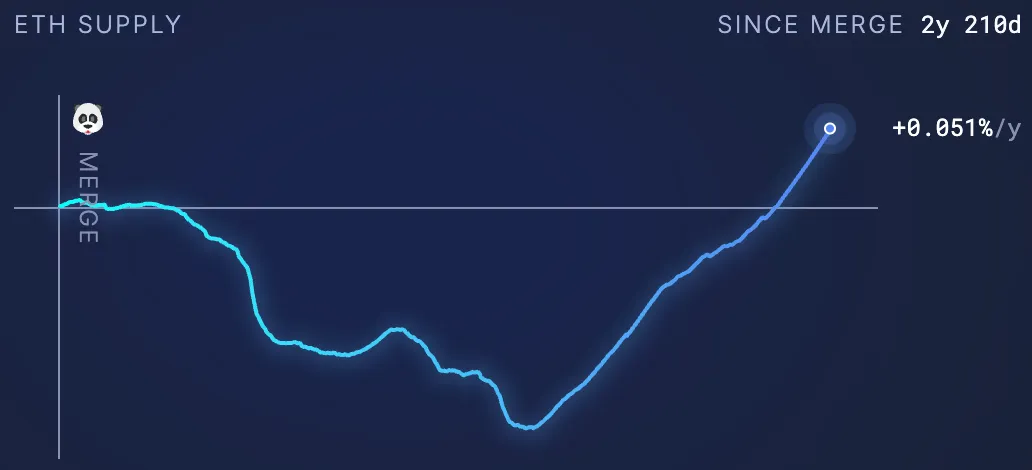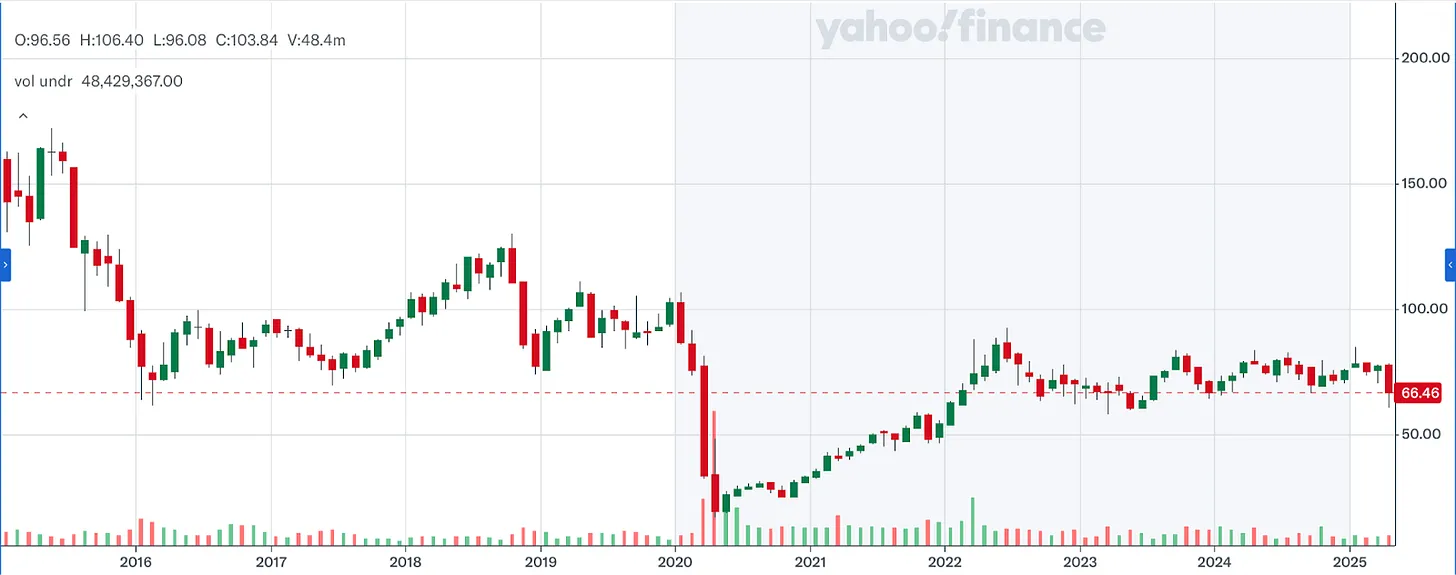ETH needs a new narrative

Reprinted from panewslab
04/16/2025·5DAuthor: Richard Chen
Compiled by: TechFlow
Last week, Ethereum (ETH) price fell to 2017 initial coin offerings (ICOs). At that time, Ethereum was just a white paper and token. Compared with today's situation where many practical applications are available, the market seems to have no concern about the progress of the Ethereum developer ecosystem in the past 7 and a half years.
The bigger problem is that ETH needs a new narrative, a clear reason to attract people to buy the token. Let's analyze common narratives of ETH and explore why they are no longer effective.
1. “ETH is the leveraged beta of Bitcoin (BTC).
This statement has indeed been true in the past bull cycles, with altcoins usually outperforming BTC, while blue chip altcoins are leveraged betas. Whenever BTC performs well, investors increase their risk input, thereby achieving better returns in altcoins.
This time the situation is different. In January 2024, the launch of Bitcoin ETFs brought a new paradigm shift. Almost $100 billion in funds flows into Bitcoin ETFs, which now hold a combined 5.7% of the BTC supply. By contrast, Ethereum ETF attracted only $5 billion inflows. Unlike in the past cycle, large amounts of money flowing into the cryptocurrency market, especially from large institutions, now flowing into BTC only and no longer spreading to other parts of the market. BTC always has a natural need from new funds that want to get in touch with cryptocurrencies, but it is unclear whether other assets have such demands as well.

Bitcoin (BTC) is at an independent level and is divided from the rest of the market.
The second effect of new capital inflows not entering altcoins is that we face a speculative pool of funds in zero-sum games that rotate between different "casinos". This was evident in the price movements in the months after the election, with speculative funds moving from Solana's AI-agent meme coins to Hyperliquid and back to $TRUMP and $MELANIA. Without economic growth, crypto tribalism with zero competition and attention accelerates this rotation. Another second layer of the effect of capital inflows not entering altcoins is that it hurts the venture capital market. The best case for token generation events (TGE) is that infrastructure projects are funded at billions of dollars, and inversely deducing the total available market (TAM) for other project categories is smaller. Due to the oversupply of capital compared to founding talents, the valuation of the private equity round has not declined. Therefore, the returns of crypto venture capital are being compressed.
2. "ETH is an ultrasonic currency."
This no longer holds true. In April 2024, ETH supply began to reverse and increased again. In February 2025, ETH has become inflated since the merger. Therefore, the argument that ETH is harder than BTC is no longer valid.
The argument for ultrasonic currency is also somewhat modest. Those who have just entered the crypto field will accept the scarcity narrative of "BTC is digital gold" without understanding the technical details of EIP-1559 and BTC or ETH, which is more deflationary.

Source: ultrasound.money
3. “ETH is digital oil.”
The problem with this framework is that ETH will therefore trade like commodities, showing sideways and range fluctuations. The value of commodities is based on the supply and demand relationship of the market, rather than as a long-term buying and holding growth asset. To illustrate this, there are two charts below that compare the performance of the CNPC and S&P 500 index over the past decade.

USO

SPY
Over the past decade, oil trading has mostly fluctuated in the range, with only two exceptions: 1) In early 2015, U.S. oil supply was released due to advances in hydraulic fracking technology; 2) COVID collapse in early 2020.
Using the "digital oil" framework, if ETH enters the market due to re-inflation, but there is no marginal purchase demand, the price will fall.
4. “ETH is the global settlement layer.”
Ethereum's long-term expansion roadmap has inherent contradictions between the two goals: 1) The expansion will be pushed to layer two (L2), and Ethereum will become the settlement layer; 2) The economic activities of L2 will accumulate value for ETH. When EIP-4844 significantly reduces the cost of publishing transaction data to layer one (L1), this improves L2's scalability, but also reduces Ethereum's revenue.
The bigger problem is that when L2 launches its own tokens, they become a bit "parasitic" for ETH. L2 has a strong economic motivation to accumulate value into its own tokens instead of ETH. Therefore, except for the technical differences in consensus mechanisms, L2 almost acts like a competitive L1.
This leads to the decoupling of EVM (Ethereum Virtual Machine) adoption from ETH value accumulation. The greatest defense in Ethereum's history lies in its development tool ecosystem around EVM - debuggers, fuzz testing tools, boilerplate contracts, etc. - which have been built after years of open source development. For new developers, building on EVM is much easier than building on non-EVM chains with less sound development tool infrastructure. With the decoupling of EVM and ETH, EVM adoption can continue to grow, as new L2s such as MegaETH and new L1s such as Berachain and Monad are leveraging the EVM ecosystem, but value accumulation returns to their native tokens instead of ETH.
5. “ETH has the most economic activity in any chain.”
In the future, there may be a situation where the total locked value of stablecoins (TVL) reaches an all-time high, the volume of decentralized exchanges (DEX) reaches an all-time high, and other indicators of economic activity reach an all-time high on Ethereum, but the price of ETH still has not reached an all-time high, as the price-to-earnings ratio (P/E) multiple shrinks. In this case, ETH trades more similar to tech stocks such as Tesla (TSLA, 97x expected PR) or NVDA (NVDA, 24x expected PR).
With current annualized profits, ETH needs to have a 300-fold P/E ratio multiple to reach an all-time high again without any currency premium. Therefore, there is still a great downside risk for price-to-earnings ratio compression.
What will happen next to ETH?
Perhaps ETH will rise due to the mean regression, or continue to perform poorly for the above reasons.
But before that, ETH needs a new narrative.
